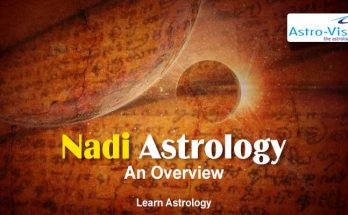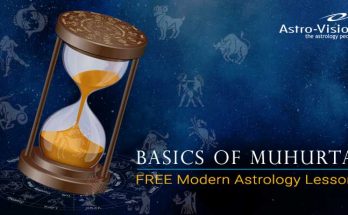1. Vedic period before 1500 B.C.
2. Vedanga Jyotisha period from 1500 B.C. to 500 B.C.
3. Jain Puranic period from 50 B.C. to 400 A.D.
4. Sidhhantic period from 400 A.D. to 1900 A.D.
In general, Pre-Siddhantic astronomy was based on 27 Nakshatras or sometimes 28. The ecliptic is divided into as many segments and the positions of the planets calculated using them. It was discovered that the seasons were related to the position of the Sun at noon. This is again related to the northward and southward motion of the Sun on the eastern horizon.
The wheel of time having twelve spokes (months) revolves round the heavens, but it does not wear out. Oh Agni, 720 pairs of sons (days and nights) ride this wheel.
Thus the concept of the Zodiacal signs informally existed and was adopted to fit in with the concept of Nakshatras. It is likely that the Sayana system in which the distances were measured from the First Point of Aries was used for observing certain rituals.
When the Sun is in Mesha (Aries) or Thula (Libra) the day and night have equal duration and for the five months from Vrishabha (Taurus) onwards the days increase in duration.
At some stage Meshadi coincided with the First Point of Aries and thereafter the difference was not reckoned. In fact, it is very doubtful whether Indians used Sayana even in the early days for predictive purposes.
Years ago the dakshinayana was in the middle of Aslesha and uttarayana was in the middle of Dhanista. This has been mentioned in the early works.
This means that 24° of Cancer was the southern solsticial point and 24° of Capricorn was the north solsticial point. At the time of Varahamihira they were respectively at 1° Cancer and Capricorn.
If we agree that the two Zodiacs coincided at Varahamihira’s time, the First Point of Aries was at 24° of Meshadi at the time referred to. It works out to about 1720 years when the astronomers who flourished at that time found the solsticial points by experimentation. The phenomenon of precession of equinoxes was known in India much before Varahamihira as there is a clear evidence for that.
K. D. Abhyankar suggests that it was Vriddha Garga who discovered precession in about 500 B.C. In fact the motion of Saptarishis as described by Varahamihira in Brihat Samhita is a riddle. According to Bernard, Saptarishis represented the solsticial colure. The solsticial colure is the great circle joining the North Pole, South Pole and the two solsticial points. Taking the Saptarishis to mean summer solstice and rishi as the Moon as given in Yajur Jyotisha and Nakshtara as that of the Moon, or a day, one can infer that the summer solstice shifted by 1 day or 1° in a century. According to this, the period of precession is 36000 years. Though Varahamihira gives a fanciful description of the seven sages in the sky, he probably knew esoterically that Vriddha Garga actually meant the precession of the equinoxes. (Bernard S in Hindu Astronomy (1869) reprinted by Caxton Publishers, New Delhi, 1951).
Origin of Siddhantas
After Vedanga Jyotisha which is dated around 1500 B.C., the Siddhantas originated. The Pancha Siddhantika of Varahamihira discusses those of Brahma, Vasistha, Paulisa, Romaka and Surya. It is mentioned [P.S. 1.3] in the notes of T.S. Kuppanna Sastri thus:
Surya himself having born among the Yavanas by the curse of Brahma taught this science to Romaka and Romaka propounded it as Roma Siddhanta. This is the development of the five Siddhantas according to Indian tradition. Saura Siddhanta as given by Varahamihira does not agree with the later Surya Siddhanta. But Surya Siddhanta was given as upadesa to Mayasura. Ptolemy the Alexandrian astronomer is known as Turamaya and the Maya in the name suggests that Mayasura refers to him. Thus the Indian origin of Greek astronomy is also suggested.
Apart from tradition which cannot be dismissed outright, according to Vedanga Jyotisha, the Sun and the Moon came together in Dhanistha Nakshatra during winter solstice. Using this, the period is worked out by some scholars to 1300 B.C. It can be slightly different and roughly modified as 1500 B.C.
The constellation Ursa Major or the Great Bear can be considered to have Indian origin in nomenclature. It is a star and is called Riksha in Sanskrit. In Sanskrit Riksha means a bear and this is an instance of ill-copying of the Greeks from the Indian source.
The Rasis were known in India at the time of Srimad Ramayana as evidenced by the reference to Karkataka (Cancer) and Mina (Pisces) while describing the horoscope of Lord Rama. One has to conclude that the twelve Rasis with the stellar division were known to us much before the Greeks came to India. It should be noted that there is absolutely no evidence to show that Indian astronomy or astrology owes its origin to the Greeks. All that is only speculation. I have discussed it under the last section.
It is true that Sayana longitudes describe the equinoxes, solstices, phenomena of seasons etc. In India also they were followed for these purposes. After the two coincided the emphasis on Nirayana became greater and the old practices became extinct. Regarding predictive astrology, the Indians found that the predictions were accurate with Nirayana longitudes.Even in the days of Parasara only the Nirayana longitudes were used for prediction. The claim that the Tropical Zodiac is superior has no validity in predictive astrology. One can take any point of the Zodiac as the starting point. That which gives accurate results emerges as the successful candidate and this turns out to be Meshadi. This clearly indicates the need for revising the Sayana longitudes for predictive purposes and replacing them with Nirayana figures.
Erroneous Concept
The Greek origin of Indian astronomy and astrology is an erroneous concept of the occidental orientalists who indulged in mischievous misinterpretation of Indian sciences without even understanding them completely. For example, Varahamihira gives the deities of planets thus:
The deities of the planets Sun, Moon, Mars, Mercury, Jupiter, Venus and Saturn are respectively Agni (fire), Water, Skanda, Vishnu, Indra, Indrani and Brahma.
To support this, Bhattotpala quotes Yavanesvara who says:
For the Moon, the Sun, Mercury, Saturn, Mars, Jupiter and Venus respectively water,fire, Vishnu, Prajapati, Skanda, Mahendra, Indrani are to be worshipped.
These are same as those given by Varahamihira. If Yavana is to be taken as Greek, this looks strange. When did the Greeks worship Vishnu? The work of Yavanesvara does not seem to be the work of the Greeks. We need a more appropriate interpretation. Varahamihira refers to Yavanas in many places. In Brihat Samhita he refers to them as Mlecchas. Who were the Mlecchas? One can interpret Mleccha as one who has low desires or you can derive the term from the root which means talk without clarity (Avyaktayam vaci). In either case it means a degenerate person or one who does not follow Sanatana Dharma. Varahamihira’s Brihat Samhita refers to Mleccha desa thus:
Nirmaryada, Mleccha, which are in the West.
From the description it refers to a principality in India, called Mleccha Desa. Perhaps, the Mleccha Desis did not follow the rituals and conventions of the orthodox people as we have seen that Yavana Jataka carries Indian thoughts and customs. One can unequivocally conclude that the Yavana Jataka is not a product of Hellenic or Hellenistic civilization. Even Tetrabiblos of Ptolemy does not have any similarity with standard Indian books. This shows that Indian astrology developed independently and not through the Greek influence. On the other hand there is evidence for the Indian origin of Greek astronomy. Surya Siddhanta is given as upadesa to Mayasura. Ptolemy is referred to as Turamaya in inscriptions.
The biggest fallacy amongst all such claims of the Greek origins of Indian astrology lies in assuming Yavana means Greek and Mleechas as meaning from the West (Europe). Perhaps those making these claims are not aware that the term yavana.
The term Yavana occurs 56 times in Mahabharata. It is said:
Mahabharata Adiparva 138-21
Arjuna subdued the king of Yavanas whom even Pandu could not vanquish.
The Mahabharata and the exploits of Aijuna deal only with the Indian sub-continent or Bharata Varsha. Arjuna never went to Greece to fight. Yavana Desa was a place within India (also known Mleccha Desa). The people here did not follow Sanatana Dharma and were also known as Yavanas. To identify the term Yavana with Greek always is absurd, as we have seen in the case of Yavana Jataka. The one-sided and highly prejudiced inferences of some of those claiming to have done research are responsible for creating such erroneous notions. They need to be dispelled. • (26-11)
References
1. Brihat Jataka of Varahamihira With the commentary of Bhattotpala, Motilal Banarasidas, 1985.
2. Brihat Samhita of Varahamihira Ed. M. Ramakrishna Bhat with tr. Motilal Banarasidas Delhi, 2 parts, 1981, 1982.
3. Panca Siddhantika of Varahamihira with tr. of T.S. Kuppanna Sastri Ed. K.V. Sarma, P.P.S.T Foundation, Adyar, 1993.
4. Pre-Siddhantic Astronomy K. D. Abhyankar Inst, of Scientific Research in Vedas, Hyderabad, 2007.
5. Srimad Bhagavatam Gita Press, Gorakhpur, 2001.














